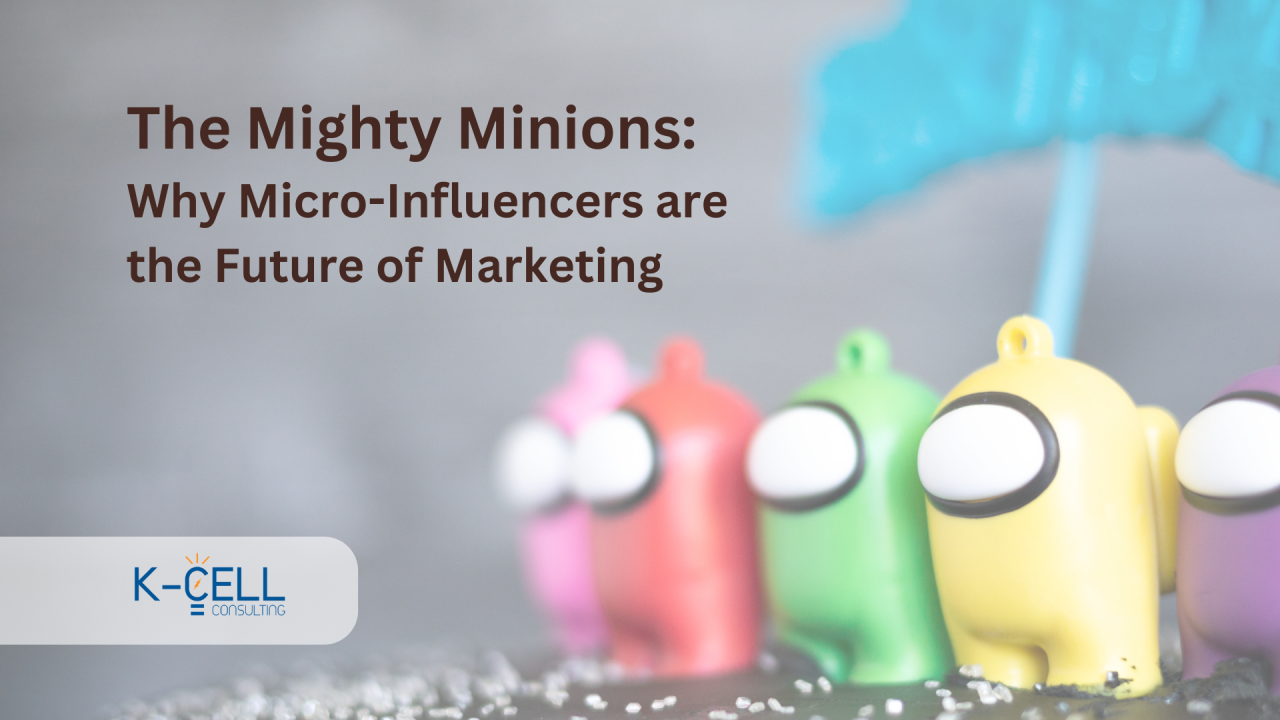
Gone are the days when influencer marketing solely meant big-budget celebrity endorsements. Today, a new breed of influencer is taking centre-stage: the micro-influencer. These everyday individuals, boasting engaged communities of 10,000 to 100,000 followers, are fast proving their worth in the marketing landscape, influencing B2C and B2B brands alike.
Who are Micro-Influencers?
Forget the red carpets and celebrity lifestyles. Micro-influencers are the people next door, the experts in your niche – the fashionista you admire, the travel blogger you trust, the tech-savvy engineer your colleagues follow, or the home cook inspiring your next culinary adventure. Their power lies in their authenticity and the deep connections they’ve built with their audience.
Why the Rise of Micro-Influencers?
Several factors are fuelling the micro-influencer revolution:
- Niche Targeting: Consumers crave trust and relatability. Micro-influencers cater to specific interests, fostering stronger bonds with their audience, leading to higher engagement and conversions.
- Engagement: Studies reveal that micro-influencers generate exponentially higher engagement rates per follower than their celebrity counterparts. Take, for instance, a fashion micro-influencer in India like Komal Pandey (@komalpandeyofficial) with 200,000 followers. Her sponsored posts garner an average engagement rate of 7%, compared to a Bollywood A-lister who might see a mere 1-2% engagement on theirs.
- Authenticity: Micro-influencers are perceived as more genuine and relatable than celebrities, leading to greater trust and influence over their audience’s purchasing decisions.
- Affordability: Compared to celebrities, micro-influencers offer significantly lower costs, making influencer marketing accessible to a wider range of businesses.
Seeing is Believing: Real-world Examples
The impact of micro-influencers transcends borders. Let’s take a look at two successful campaigns:
- In the US, Mike Thurston (@dadbodfashion), a micro-influencer with 40,000 followers, partnered with Levi’s to promote their plus-size clothing line. The campaign resonated deeply with his audience, generating high engagement and positive brand sentiment for Levi’s.
- Closer to home, Mallika Dubey (@mallika_dubey), a food blogger with 60,000 followers in India, collaborated with Maggi to create unique recipes using their instant noodles. This campaign effectively reached a targeted audience interested in quick and easy meals, achieving impressive brand awareness and engagement for Maggi.
Beyond B2C: The Power of Micro-Influencers in B2B
The influence of micro-influencers extends far beyond the realm of B2C marketing. In the B2B space, they can be valuable assets for:
- Promoting specific products or services: Imagine a tech micro-influencer like Sahil Shah (@sahil_says) showcasing the benefits of a new software tool to his developer community.
- Building brand awareness: An industry expert like Sheena Bajaj (@sheenaba)**, with a focused following, can share thought leadership content and attract potential clients.
- Engaging with a targeted audience: Micro-influencers can participate in industry events and foster connections with relevant decision-makers, amplifying brand reach.
Why Choose Micro-Influencers?
While big influencers offer wider reach, micro-influencers come with distinct advantages:
- Higher ROI: The cost-effectiveness of micro-influencers often translates to a higher return on investment for brands.
- Stronger Engagement: As seen earlier, micro-influencers typically generate higher engagement rates, leading to more meaningful interactions and conversions.
- Targeted Reach: They allow brands to connect with specific niche audiences, increasing the relevance and impact of their campaigns.
- Authenticity & Trust: The genuine connection micro-influencers share with their audience fosters greater brand trust and advocacy.
The Future is Micro
As brands seek efficient and targeted marketing strategies, micro-influencers are poised to play an increasingly vital role. Their authenticity, niche expertise, and engaged communities offer a powerful alternative to traditional celebrity endorsements. By leveraging the power of micro-influencers, B2C and B2B brands can achieve greater reach, engagement, and ultimately, success in the ever-evolving social media landscape.
P.S.: Sometimes these micro-influencers become mega-influencers, thanks to their unique content creation skills. A brand may engage with such influencers depending on their brand promise and the target audience the brand wants to engage with: be it Tanmay Bhatt (comedian with 1.9+ mn followers: https://www.instagram.com/tanmaybhat/), Kusha Kapila (Digital Creator with 3.5+ mn followers: https://www.instagram.com/kushakapila/) or Rupal Shah (from Surat with 514k+ followers: https://www.instagram.com/roopalshahshah/). In fact, there is a growing trend of moving from being an influencer to a brand creator using ‘Content-to-Community-to-Commerce Strategy’ where these influencers have successfully launching their own brands!
